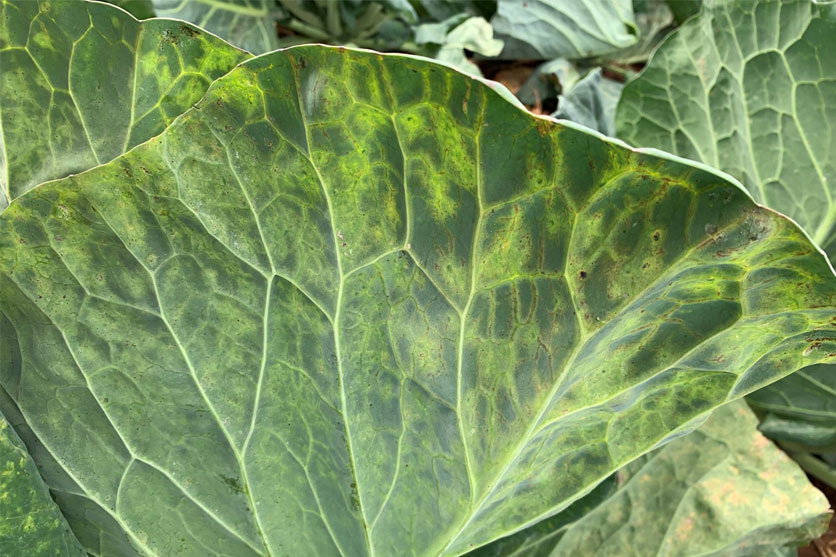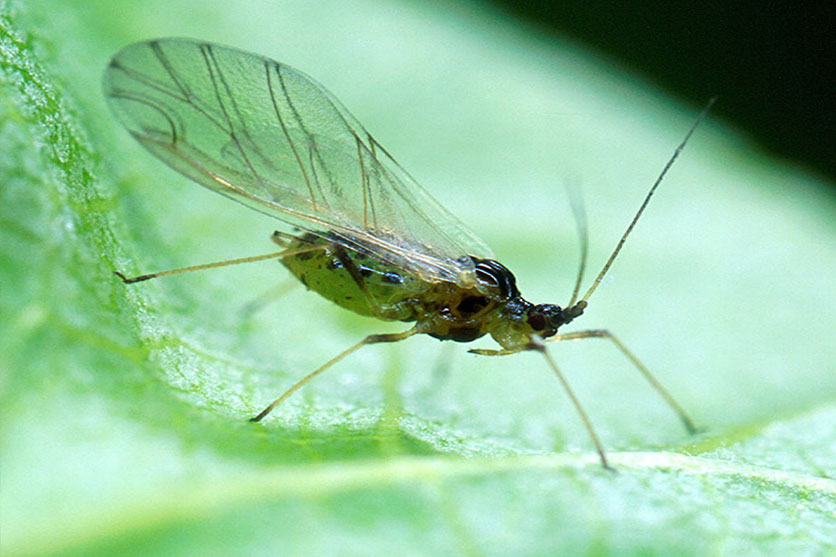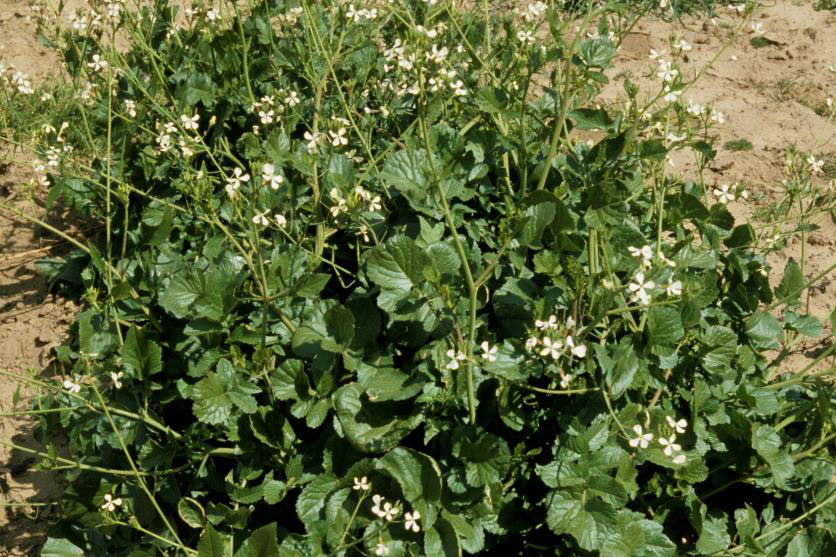Triple threat to your vegetable brassica crops
— By Andrew Daly
Plant Health Diagnostic Service, Elizabeth Macarthur Agricultural Institute
Viruses are currently circulating among vegetable brassica crops in the Sydney basin. Recently, three of the most important – turnip mosaic virus (TuMV), cauliflower mosaic virus (CaMV), and turnip yellows virus (TuYV) – were identified in a single cabbage crop.
Besides cabbage, brassica crops affected include cauliflower, broccoli, Chinese cabbage cultivars and canola.
Symptoms
These viruses cause a variety of symptoms which can be highly variable according to host species/cultivar, environmental conditions and the number of viruses present in the plant. However, they commonly include patterns of light and dark areas (mosaic), chlorotic (yellow) vein banding, purple, red or yellow leaf discoloration and distortion of leaves. TuMV can also cause chlorotic and brown to necrotic (dead) ringspots and necrotic flecks, streaks and patches. Additionally, stunting of plants is common with early infection, leading to variable growth across a crop or shift.
These effects lead to significant yield reduction and unmarketable product.
Of the three viruses TuMV is the most important and widespread brassica virus, however infection with two or more of these viruses at the same time can magnify the impact; for instance, CaMV symptoms are usually worse in a plant also infected with TuMV.
Transmission
Although these viruses are unrelated to each other, all three are transmitted by multiple aphid species; primarily the ‘green peach aphid’, but also the ‘cabbage aphid’, ‘mustard aphid’ ‘foxglove aphid’ and ‘cotton aphid’.
The type of host plant, mode of transmission and behaviour of the aphids can affect how efficiently and therefore rapidly viruses spread through a crop.
For instance, CaMV can infect a plant even when an aphid carrying the virus doesn’t settle and feed but simply tests the plants feeding suitability, only making a quick exploratory puncture of the outer cells in doing so. Fortunately, these viruses are not seed-borne, however CaMV and TuMV may also be transmitted by virus-containing sap on hands and tools.
Weed Hosts
Naturally, volunteer/self-sown brassica weed species such as wild radish and turnip weed are hosts of these viruses. However, some perennial weed species commonly seen on farms and other crops may host these viruses, as well as harbour their aphid vector species. For example, TuYV can infect clovers and mallow, while TuMV may also infect lettuce and spinach.
The viruses can “over-summer” in these “alternative” hosts, maintaining a reservoir of virus ready to infect your next brassica crop.
Disease Management
So, what management steps might be most effective at mitigating the risk to your vegetable brassica crops from viruses?
Seasonally, autumn appears to be the most crucial period for infection and the overall potential impact of a virus on a crop will be greatest when infection occurs in seedlings or early sown crops. Seedlings should be sourced from nurseries or production areas with good weed control, crop monitoring and rogueing practices, and should be checked for aphids as they are delivered.
If possible, they should be treated with an insecticide before planting. Additional important management steps/options include:
- Separation – avoid planting new crops near and down-wind from older virus and aphid-affected crops;
- Weed management – removal of weed hosts so that aphids don’t transfer virus from them to your crop;
- Crop monitoring – careful and regular monitoring for aphid and natural enemy numbers at the beginning of the season is crucial;
- Pesticide application – insecticides can be used to control aphids if they appear to be getting high in number, but due to the risks associated with developing resistance and killing off natural enemies avoid this option if possible. Furthermore, because aphids transmit viruses so rapidly, disturbing them with sprays can stir them up and lead to many more plant visits before dying, and potentially faster virus transmission than might otherwise be the case;
- Crop resistance – varieties resistant to the viruses may be an option, however there are multiple strains of these viruses and no variety will be resistant to all strains of a virus.
The costs of completing virus and bacteria disease diagnostics for vegetable brassica samples will be absorbed by the Hort Innovation-funded research project VG16086 until June 2021.
For information about the project and submitting samples please contact EMAI Customer Service on 1800 675 623 and ask to speak with Andrew Daly or Toni Chapman at the PHDS Laboratory.
This communication is part of the Hort Innovation-funded Area wide management of vegetable diseases: viruses and bacteria (VG16086) project.
Sample diagnostics are provided free of charge under the NSW Department of Primary Industries component of this project.




